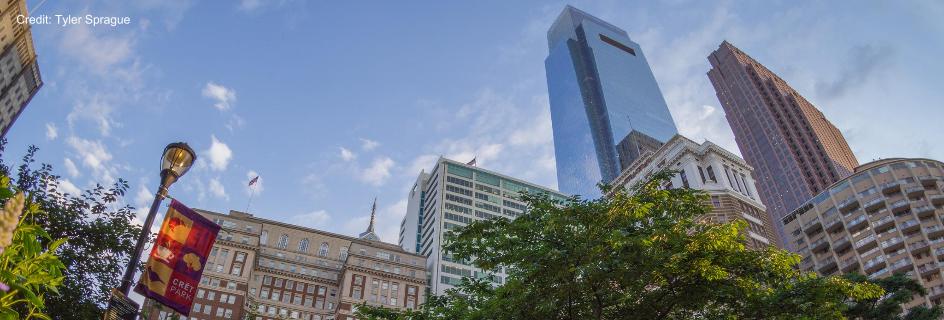- About GPA
- Global Events
- GLOBAL NEWS FROM PHL
- Global Directory
- World Heritage City
- Sustainable Development Goals (SDGs)
- Global Philadelphia Role on Sustainable Development Goals
- Completed Sustainable Development Goals
- SDG#1: No Poverty
- SDG #2: Zero Hunger
- SDG#3: Good Health & Well-Being
- SDG#4: Quality Education
- SDG#5: Gender Equality
- SDG#6: Clean Water & Sanitation
- SDG#7: Affordable and Clean Energy
- SDG #8: Decent Work and Economic Growth
- SDG #9: Industry, Innovation, and Infrastructure
- SDG#10: Reduced Inequalities
- SDG#11: Sustainable Cities and Communities
- SDG#16: Peace, Justice and Strong Institutions
- SDG#17: Partnerships for the Goals
- Press
Home ›
Clearing the Fog of War at The Museum of the American Revolution
Posted on August 8, 2014

Gabrielle Lantiere, for GPA -- Many Americans and visitors from other countries do not fully understand the history of the country's revolution. Philadelphia’s forthcoming Museum of the American Revolution, scheduled to open in 2016, seeks to change that.
ZeeAnn Mason, the museum’s vice president and director of marketing and communications, came to the project 14 years ago when it was only a vision of the Valley Forge Historical Society. The historical organization and its collection of artifacts needed to leave their current home at Washington Memorial Chapel. The collection was started by an Episcopal priest, Reverend Burke, who was passionate about creating a museum in order to tell the story of the country’s founding.
“It is amazing that there is not a place for people to come and understand why there was a revolution,” Mason said. She spoke about her own lack of knowledge initially about this time period in history and how she has come to realize the incredible story that is the American Revolution.
The architectural firm tasked with creating the building that will house the museum, Robert A.M. Stern Architects, have the expertise to build something that fits into the historic neighborhood of Olde City. The architectural style harkens back to the kind of classical structure that the founders aspired to. It will have a welcoming plaza with outdoor cafe and will feature wall reliefs on the lower outside plaza level.
The museum aims to create an interactive experience for visitors, showing just how much change and chaos occurred during the war. Mason explained that not many people think about how the victorious colonies were left without government and how this government was to be founded solely on ideals of liberty.
“I have come to appreciate this time in a new way,” said Mason, who is passionate about creating this transformative experience for others. She hopes visitors will appreciate this “amazing time in a way they hadn't before.”
Demonstrating the complexities of the revolution, the museum experience will take visitors on a journey, showing just how complicated the conflict was and how many different kinds of people were involved.
“Our research shows that people really don’t know this history of the revolution. And yet, millions come to Philadelphia in order to learn this history,” she explained.
Mason, along with a team of experts, were left with the daunting task of figuring out how to tell this story in a way that would engage a broad public. They plan to showcase George Washington’s tent as the “first oval office” among many ways to make this history tangible while focusing on the artifacts. Mason explained that a tent is not something that would normally be kept as a historical artifact, but this is “where he struggled with decisions and troubling times.”
The museum staff plans to incorporate a theater that will tell visitors what happened after the war and the meaning of the tent. The tent itself will be on display behind a screen glass, creating an interactive experience while maintaining the integrity of the artifact. This goal of interactivity was difficult to create in a way that would not upstage the artifacts, Mason explained.
The linear progression throughout the museum will start with the beginnings of the revolution in which visitors will walk into a riot scene, conveying an exciting, yet tumultuous time. The tour will also feature a life size “Liberty Tree,” showcasing how news about the revolution was shared.
The story of the revolution is all around Philadelphia and many come to the city seeking a better understanding of the birth of our nation. Mason and her team believe that after visiting this museum, people will understand what really occurred between the Declaration of Independence and the signing of the Constitution. The museum can be a portal to these places and beyond, much like Brandywine and Valley Forge. In particular, international visitors will find a lot to relate too.
“This is not just a story of an exclusive group of people,” said Mason.
Photo courtesy of the Museum of the American Revolution.







